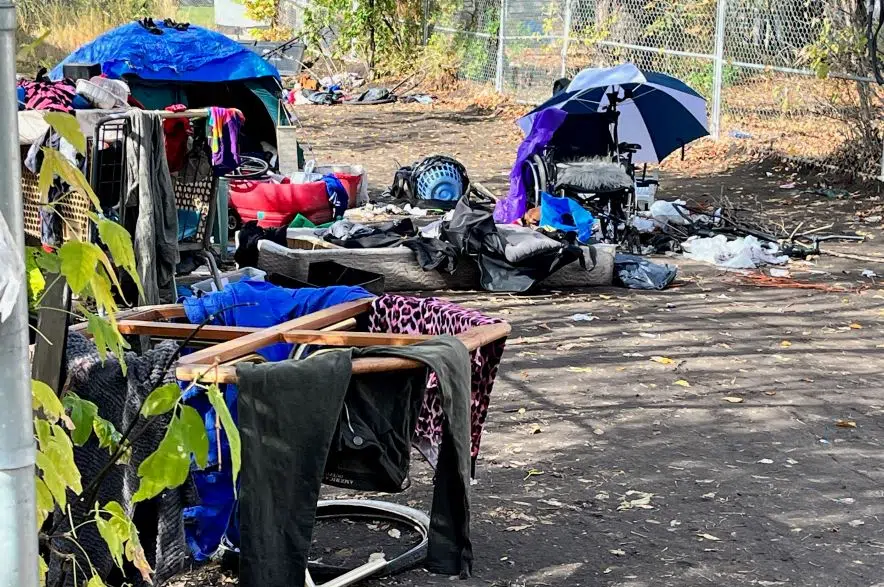When most people have to use a washroom, they simply use the facilities inside their home or business.
But for those who are homeless – especially in Saskatoon’s core neighbourhoods like Riversdale and Pleasant Hill – that’s not an option. So, they find anywhere they can to relieve themselves, including storefronts, alleys, alongside buildings, bushes, or in local parks.
At Wednesday’s Governance and Priorities Committee meeting, Pamela Goulden-McLeod, director of emergency management, said Saskatoon has seen a dramatic rise in the homelessness since last summer, and there is an urgent need for more access to washrooms.
“With the planned closure of the overnight warming location at St. Mary’s, the adjustment of hours at four Saskatoon public library locations and the adjustment of hours at Prairie Harm Reduction, access to washrooms in this area is extremely limited after six o’clock at night,” she told the committee.
But, she added, a portable washroom, a trailer containing multiple bathrooms, or even a fixed, permanent structure would need to be staffed, monitored, cleaned and supplied at all times.
“Community partners have been very clear that without any staffing supports in place, any additional washrooms would create challenges for the safety of the individuals using these locations, for those in the area around the washroom location, and for the security of the additional washroom locations,” she said.
READ MORE:
- Pleasant Hill dental clinic struggling amid calls for more resources to help homeless
- Alberta-based Christian non-profit to run two Saskatoon homeless shelters
- ‘We’re all human:’ Saskatoon homeless in need of warm winter clothing
That’s something that could cost hundreds of thousands of dollars and hasn’t been allocated for in the current city budget, according to city manager Jeff Jorgenson. During budget deliberations last December, $100,000 was approved for opening and maintaining riverbank bathrooms, but that money has already been spoken for.
Community groups say homeless people deserve dignity
Several presentations were made to city councillors, including one from the chief operations officer of the Saskatoon Community Clinic and Westside Clinic. Toby Esterby highlighted the need for more public washrooms and water sources, and implored council to act.
“Other levels of government are abandoning the most vulnerable citizens of this city. You have to opportunity to side with them,” he said.
“All that we’re talking about in this most basic decision is the opportunity for folks living in Saskatoon, to go to the bathroom with some dignity.”
Shirley Isbister, president of the Central Urban Métis Federation Inc., echoed Esterby’s calls.
“Washrooms are human rights for us. The majority of people that were to have access, or are homeless- probably about 95 per cent of them – are Indigenous people, and it’s so sad to see in the community, what’s happening,” she said.
“Where do we expect people to go to the bathroom when nothing’s open?” Isbister continued.
“We need to have washrooms. They need to be staffed 24 hours a day, and it needs to be by two staff for safety.”
She noted that homeless women fear being sexually assaulted while using public bathrooms, especially in shelter washrooms that aren’t monitored.
Randy Pshebylo, executive director of the Riversdale Business Improvement District, said his organization does not support a plan to place temporary, portable bathrooms in the Riversdale area, but asked that existing organizations like the White Buffalo Youth Lodge and local libraries keep their bathrooms open later. He also suggested the construction of a supervised, permanent washroom.
“People need more dignity than the portable washrooms that are being proposed. There are safety issues.”
Pshebylo noted the potential for encampments to pop up around portable bathrooms, but added that it’s a risk with permanent facilities as well.
Jorgenson said the information gathered at Wednesday’s meeting would be considered, and a report with recommendations will be presented at the May council meeting. At that point, council could recommend a course of action and potentially approve funding for washroom facilities.











